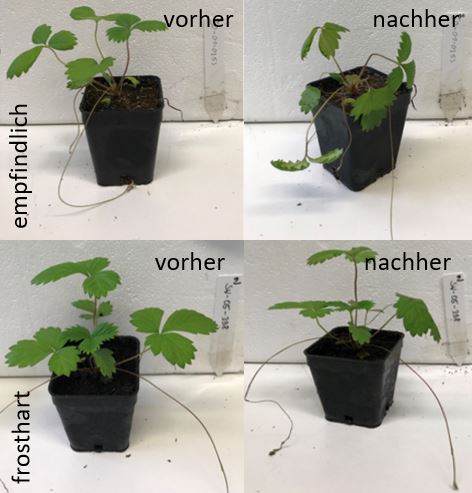FRAGANANAS: Wild Strawberries for improved cold adapation
What is the question? Strawberry (Fragaria × ananassa Duch.) is the cash crop of Egypt. Especially in winter, bevore the fruits from Southern Spain are available, the farmers in the Nile delta use this market niche. The project ventures to define genetic factors of frost tolerance. For this goal we use the genetic diversity of our native Wild Strawberry. In frame of the CWR Gene Bank this diversity had been collected all over Germany. By crossing with Sweet Charly, a variety relevant for Egypt, we want to improve the resilience against nocturnal freezing episodes as they occur also during the Egyptian winter. We also investigate, whether constrained irrigation can cause cold hardening.
What did we achieve? First, a method had to be developed to measure and, thus, compare, frost susceptibility. From 70 genotypes, 5 tough guys were identified. Now, we try to find out the cause for this freezing tolerance. For a especially tough guy from the Northern Black Forest we found elevated levels of Cold Box Factor 4 (CBF4), a gene switch, known to play a role for freezing tolerance. Meanwhile, we could show that CBF4 activates the gene for the dehydrin Xero2. This anti-freezing protein attaches to the sensitive membranes of the cell and protects them from being damaged by ice crystals. Our tough guy from the Northern Black Forest is so tought, because it is sensitive and responds to cold without any hesitation. In cooperation with the Institute for Fruits and Vegetables of the Max-Rubner Institute we investigate currently, how this acts on the compounds of leaves and fruits. The berries are not only supposed to be freezing tolerant, but also healthy and tasty.


